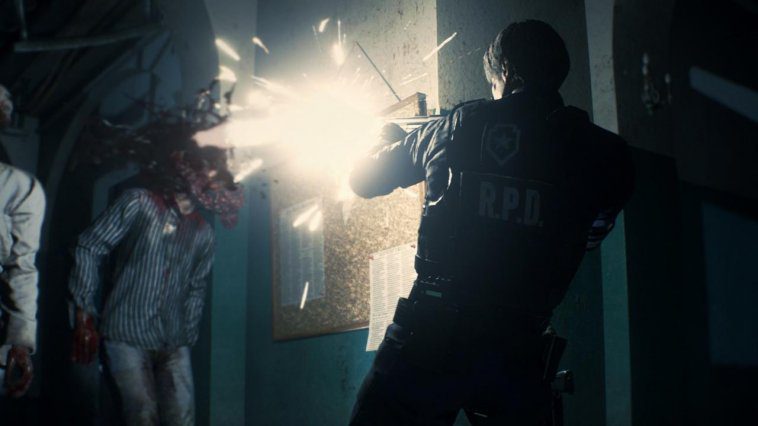We’ve known about the remake of Resident Evil 2 for quite a long time. It was announced in late 2015 by producer Yoshiaki „H“ Hirabayashi, who only days prior had pitched the game to Capcom after gathering feedback for fan interest in a Resident Evil 2 remake on Facebook. Since its initial reveal, the survival horror remake was kept under wraps for a few years until E3 2018. At Sony’s press conference, Capcom debuted the first gameplay trailer, finally giving us a glimpse at how it’ll look and play. And better yet, we got a release date: January 29, 2019.
The excitement of seeing familiar characters and locales recreated with modern visuals was only elevated after our time spent playing a demo at E3. Resident Evil 2 Remake feels like it respects the nostalgia fans have for the game, and actually factors their intimate knowledge of the game into its design. It stokes memories of the PlayStation classic with faithful renditions of iconic Raccoon City locations, while at the same time unexpectedly flipping the script on the original to terrify longtime fans. While Resident Evil 2 Remake currently feels like a respectful cover of the original with some modern flourishes, our time spent in Racoon City left us with a few questions.
During the show, GameSpot was given the opportunity to talk to Yoshiaki „H“ Hirabayashi and Tsuyoshi Kanda, the producers of Resident Evil 2 Remake. We discussed not only how much the game has changed from the original, but other subjects such as why they chose to use a third-person over-the-shoulder view, how much Resident Evil 7 influenced the game’s development, and their major inspirations while working on the project.
GameSpot: How much of the game has changed? What can fans expect to be the same as the original and what they can expect to be completely different?
H: It’s hard to nail down a percentage of new versus old per se, but we really wanted to trace the original game, and that will let you have your muscle memory for keeping the key beats of how the game is structured. But in between those key beats, we wanted to do some restructuring and bring some new surprises. So you’ll definitely have key moments which feel totally nostalgic and you’re like, „This is Resident Evil 2.“ But there will be some other parts in-between that [which] will actually be quite fresh and original.
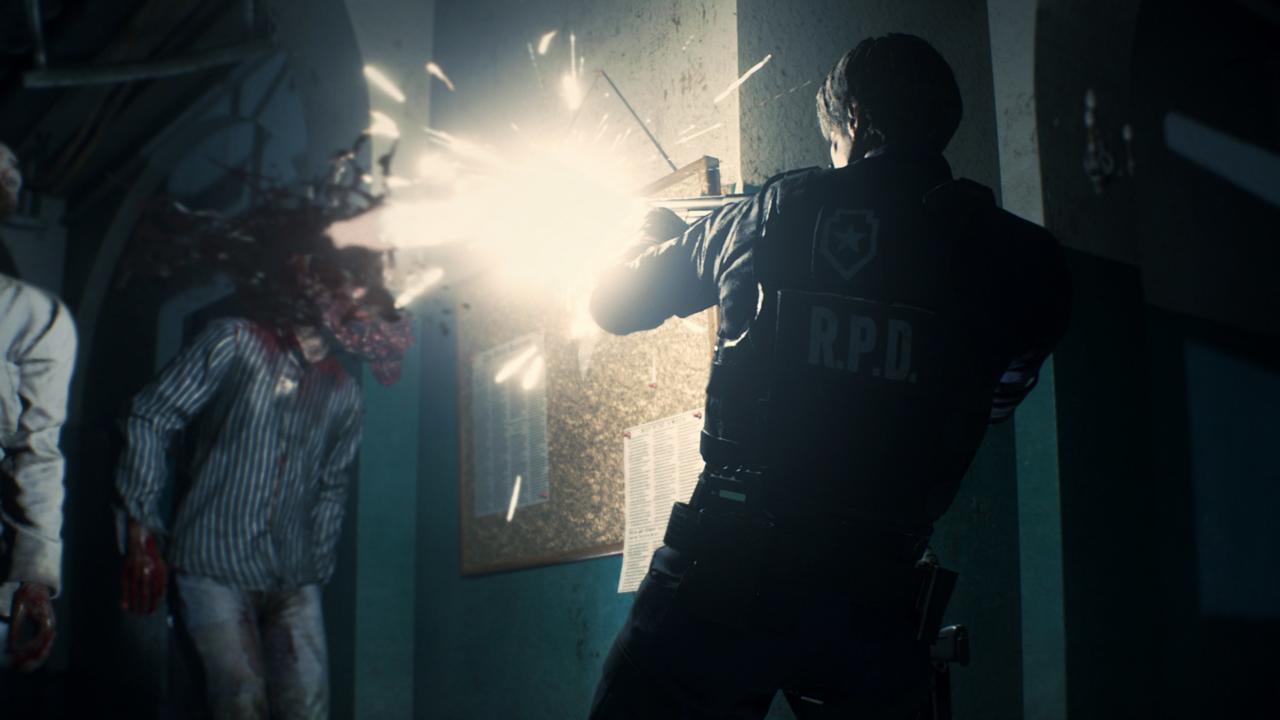
How easy has it been for you in terms of creative freedom to reshape and reconfigure such an iconic game? How do you implement changes while retaining the spirit and mechanics of the original?
Tsuyoshi Kanda: I feel like we’re a team who all really respect the original a lot, but we do feel our creative freedom coming out of the fact that we’re using the RE engine, which was first used in Resident Evil 7: Biohazard, and being able to use that as the basis for the game has really unlocked a lot of freedom for us because it’s such a great basis.
You know, it’s let us achieve such amazing immersive visuals and sound that we are then free to focus on thinking about how we’re going to restructure the game, and it lets us challenge ourselves to bring our best game to the process. So I would personally feel like it was quite a free process to this point.
H: I feel like I’ve gone back and forth a lot. You know, we see-sawed a lot between total respect/recreate the original, and then bring something new. Players today need something new to experience, and the team all have got their own individual memories of playing the original game and how they felt about it, and what they wanted to bring to the new project. And I think that over the course of the three or so years of development, what we’ve arrived at is what people played at the show. It’s hitting all the beats that you’ll remember, but it’s taking time to also bring you something fresh in between those.
There has obviously been great critical success with Resident Evil 7: Biohazard, but the remake was announced before its release. Did that game’s success influence the direction of where you wanted to go with the Resident Evil 2 remake?
Kanda: Well, we first soft-announced this title in late 2015 with the We Do It video. At that time, Resident Evil 7 was already in development … and then we went on to release it in January 2017. So the timeline has kind of been parallel for both games, but there’s been a great positive effect on both titles from each other.
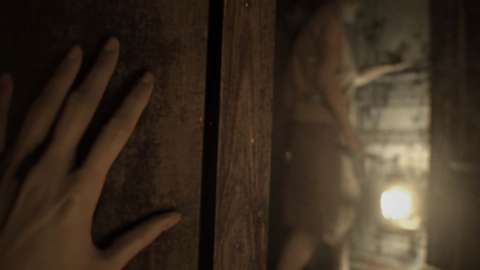
The learning we have from that process have been able to be fit back into Resident Evil 2, because it’s using the same engine, and that lets us bring a higher level of quality. While we are using the same tools, we [are] even better at using them now than we were with Resident Evil 7. Both titles have sort of similar approaches in that we want to bring the ultimate in horror and immersion to each of their different concepts, and I think that they’ve been a positive influence on each other.
How did you settle on the perspective? The series has gone in numerous directions over the years, and with Resident Evil 7’s camera being first-person, what made you choose third-person?
H: We looked into all kinds of possibilities and options during a long process of deliberation and consideration when it came to the camera, and it all came down to the feeling we want you to have when you play the game, and we wanted to have the key pillars of scary survival horror, and also, a sort of so-called metroidvania style exploration of the environment. And when it came to how to bring the best experience of those two aspects together: the answer was the over-the-shoulder third-person view.
We wanted it to be intimately terrifying in nature, to [have] up-close and personal zombie encounters that you can only get, I think, with that kind of camera view. You’ve got your character right on the screen, but when a zombie comes in and bites you…maybe you noticed on the demo there’s like cinematic zoom in, and they just [get] right up in your face.
It’s an intensely personal experience, and the only way to do that we felt was to choose this kind of camera angle. So it’s really delivering the experience that we want players to have with this perspective.
You need a javascript enabled browser to watch videos.
Resident Evil 2 Remake Gameplay – E3 2018
Please use a html5 video capable browser to watch videos.
This video has an invalid file format.
Sorry, but you can’t access this content!
Please enter your date of birth to view this video
By clicking ‚enter‘, you agree to GameSpot’s
Terms of Use and Privacy Policy
It’s also opened up the possibilities of the puzzles, which are a classic element of Resident Evil games. There’s a room where, slightly ironically, there’s remnants of welcome party set up for Leon’s first day. It was supposed to be his first day, and it was supposed to be a celebration, and in that setting you find a note on the desk detailing what would have been a fun puzzle game if it wasn’t for the zombie outbreak where his new colleagues were saying, „We need you to remember our names. We’re going to play a game,“ and you have to find all their name plates to unlock Leon’s desk. And you find them scattered across other desks or some of them are dropped on the floor, but you really need to look for them and get up close to the environment.
You can only do that with a camera like that. If it’s a super pulled-out camera, it can be very difficult to implement that kind of puzzle. So I think that this has also been a great choice for us to open up the possibilities of how we should bring you puzzle-solving and how we planned that in with exploration and combat.
Resident Evil 2 has a huge legacy. I know it has been much requested, but what motivated you to take on remaking Resident Evil 2? Why was this something you wanted to do?
Kanda: We really just want to give fans what they want, you know? We have this original game that’s known as a masterpiece and it’s been so many years and people have been saying that they’d really like to revisit this title, and whenever that kind of intensity and passion from the fans is out there, it’s impossible for us to ignore that really, because it’s a sign of how dedicated they are to our titles and our brands.
Everyone on the remake team is a Resident Evil 2 fan, so just as much as anyone, we want to make the amazing game that the fans want as well.
Yoshiaki „H“ Hirabayashi
It almost becomes an inevitability at that point, so we just decided that we really want to take this on. You know, there’s a process when you’re deciding how to take on a game like this, I mean, a lot of trial and error and decisions to be made, but at the end of the day we just want to try and take the massive expectations that you have, which could be taken as a negative or a reason not to do it, but we want to take that and say, „We’re going to aim high. We’re going to not only match that, we’re going to exceed those expectations.“ It’s a really exciting challenge for us.
H: We are included in that group of fans of RE 2, ourselves. Everyone on the remake team is a Resident Evil 2 fan, so just as much as anyone, we want to make the amazing game that the fans want as well.
Horror and action has been a tough balance Resident Evil has had to make over the years. How did you go about managing this for the Resident Evil 2 remake? What was your philosophy on this dynamic for this project?
H: First, I want to make sure that everyone is aware right from the announcement period that just because we’ve gone with over-the-shoulder third person, that it’s not Resident Evil 4, you know? The ingredients for Resident Evil 4 was it’s Resident Evil, it’s over-the-shoulder, and it’s bringing in shooter elements.
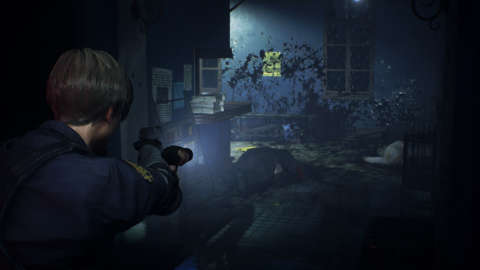

But this game isn’t the same; we’re taking the explorative elements–the Metroidvania-like backtracking exploration you’ve seen in previous Resident Evil games–and we’re putting in an over-the-shoulder perspective, but that’s it. We’re not actually adding in any of the extra shooter aspects that was a part of Resident Evil 4. So it isn’t going to take on the tone and style of the more action hero approach you’ve seen many of the characters take in previous Resident Evil games. It’s still these average people stuck in the desperate situation, trying to survive.
The way we can make players feel powerful in that context is they’re not just going to be reeling off endless rounds of bullets; they’re going to have to do resource management and they’re going to have to watch their ammo. If they’re able to learn the best way to aim and shoot zombies, and how to take them down or weaken them; then there’s the risk and reward of taking the time learn how to get the right shot.
So I think that even though you’re not an action hero in this game, you’re going to feel powerful by having learned exactly the timing and approach and strategy you need to take the enemies down.
That’s actually something I noticed about the shooting mechanics. You really have to time your shots.
Yeah, like you’re saying the timing is important and you have to line up your shots. That’s a good kind of stress, where you’re like, just keep trying to get it right. There’s a lot [of] different weapons in the game all with different feels, so you can find the one that suits you. And we even included a few customization options as well for people who like to change their reticle colors and stuff.
In your process of remaking Resident Evil 2, I was curious, did you pull from any other inspirations for its horror–at least aside from the original?
H: It’s not direct inspiration of the content so much as an approach, but if you think of Alien, that movie introduces this enemy character. You have no idea what it is when you watch the first movie, and it has to establish what it is, what the rules are. And when you have a sequel like Aliens, you have to go in assuming people know what they’re talking about when they say what an alien is and what it can do, and that second movie has to sort of expand the world, the universe of the movie to bring something extra to that.
And I think with Resident Evil 1 and 2, it’s a similar thing, where Resident Evil 1 is like the grandfather of survival horror-games. It’s the first time most people played a game that was a horror experience, and had zombies in it, and they had to figure out what the rules of fighting a zombie are. Once you’ve established that, like with Resident Evil 2, you have to know that’s the new baseline. You’re not starting from zero anymore.
The new baseline is how Resident Evil works, and then how do you expand on that? How do you bring new experiences and gameplay to that? And I think I’ve got a similar approach to that, where you know: the stoicism of Alien, or the first Resident Evil is where the series starts, and then the second one you have to broaden your horizons a little to bring something new to the table. And we try to bring a mixture of the pure horror of the original and then bring up a new level of entertainment to the sequel.
The same applies to Batman Begins and The Dark Knight. You can’t do the second one that way without having establishing it properly first. Batman Begins had to be like, who Batman is in this world, this is how he operates. Everyone knows that going in, so you can kick off The Dark Knight with The Joker introduction.
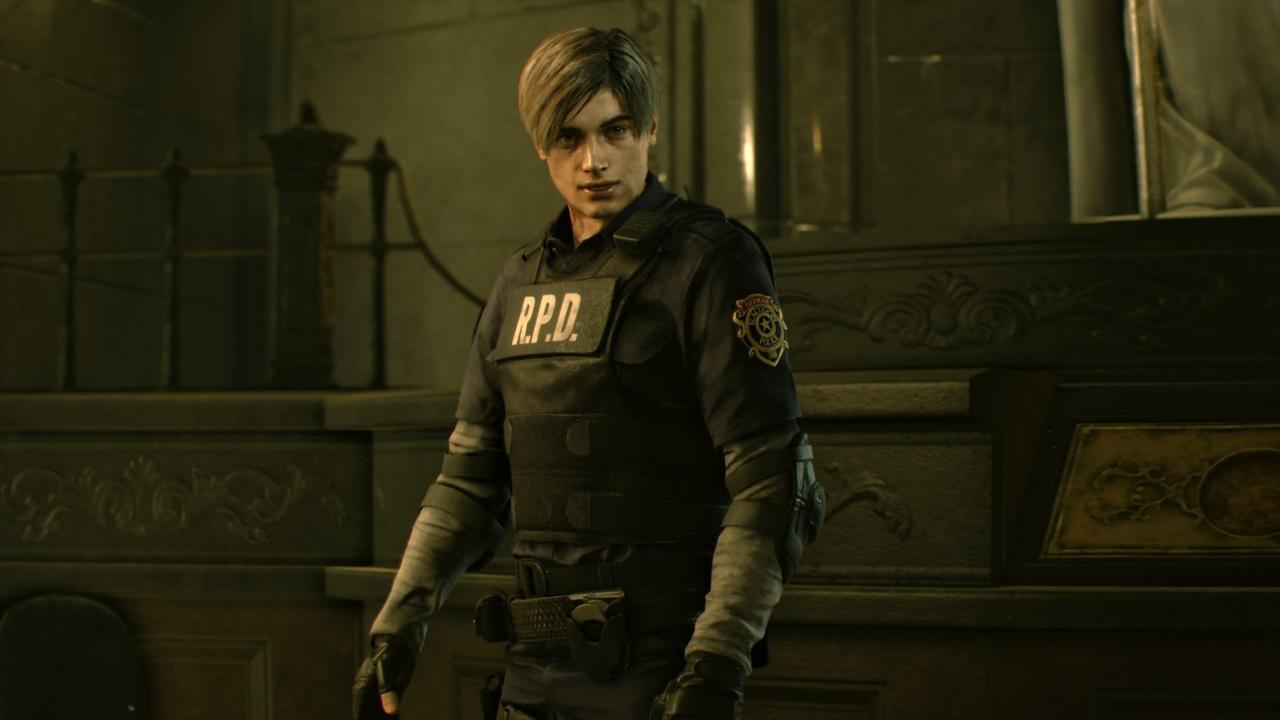











But some of the other design philosophy from those films can be applied to the Resident Evil 2 Remake as well. For example, the appearances and costumes in the game. We want to bring a certain reality to them. When you look at a character like The Joker, previous live-action iterations have been a bit more theatrical and had someone who looked like how he would from the comics, but they didn’t answer the question of how someone would look that way in real life. In The Dark Knight, Christopher Nolan portrays him as someone who has scars and puts face paint on.
There’s this conundrum towards how to get a more realistic version of a fantastical character on screen, and we’ve thought about that with things like how we’d recreate the original’s costumes for the remake. We’d ask ourselves: what if Leon was wearing a tactical vest instead, and how would that look? We tried to add an authenticity to the designs that isn’t completely new or different from the original game.
When it’s anything where you’re building on a prequel or a sequel, a previous title, or if you’re reimagining something that already exists, the biggest challenge for us as creators is to bring a new level of reality to things that we’ve all seen before.
If there was another Resident Evil game that you’d love to fully remake someday, which would you do?
H: For me, that was Resident Evil 2. I want to get that over with now, because that’s actually the one I always wanted to do. I can’t think of remaking another game until I’ve finished that one.
Kanda: I’d almost like to imagine how would we’d remake Resident Evil 7. It may be one of the most recent entries in the series, but it would be quite exciting and interesting to consider how we’d redo that game.
Website: LINK

